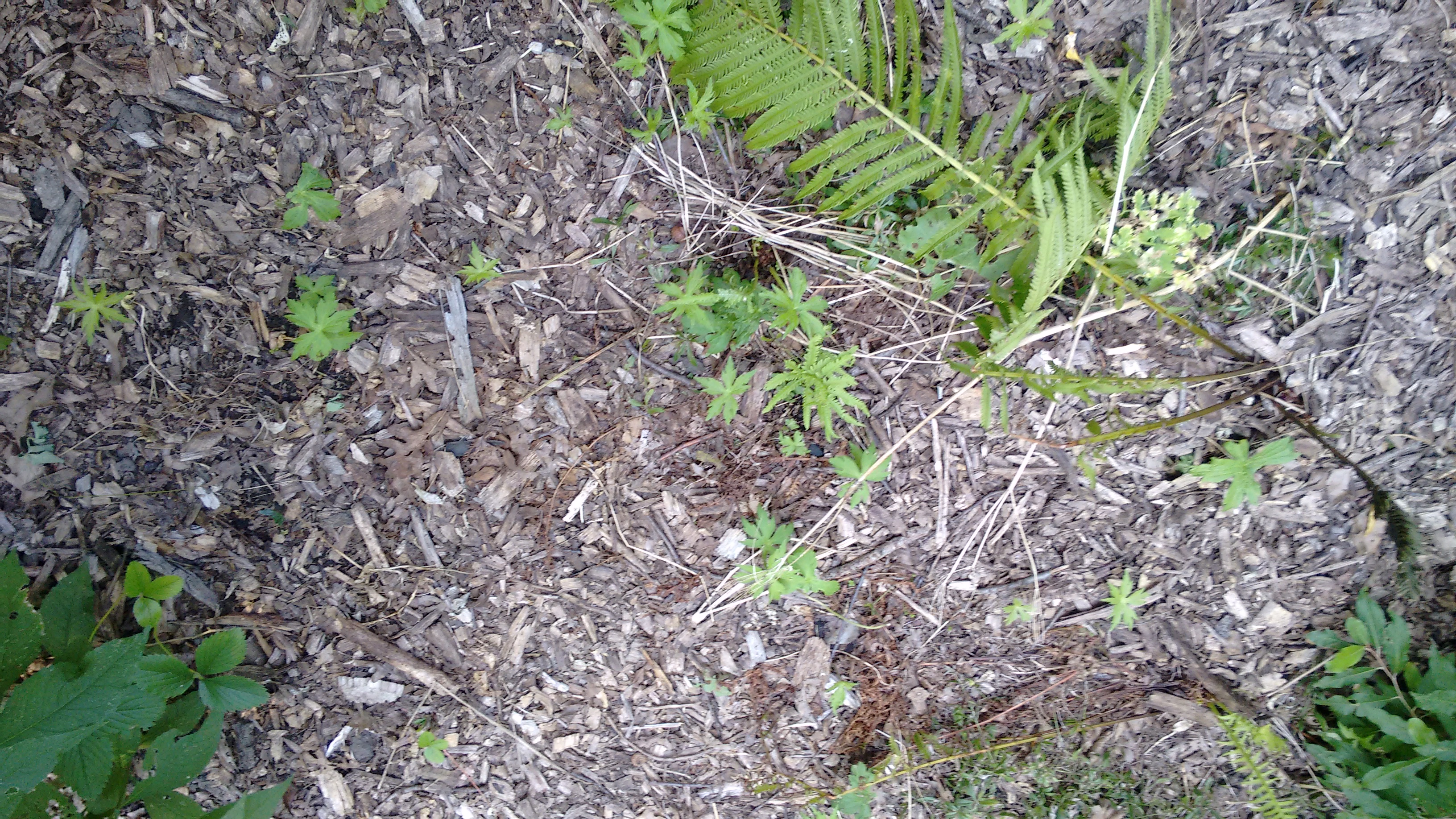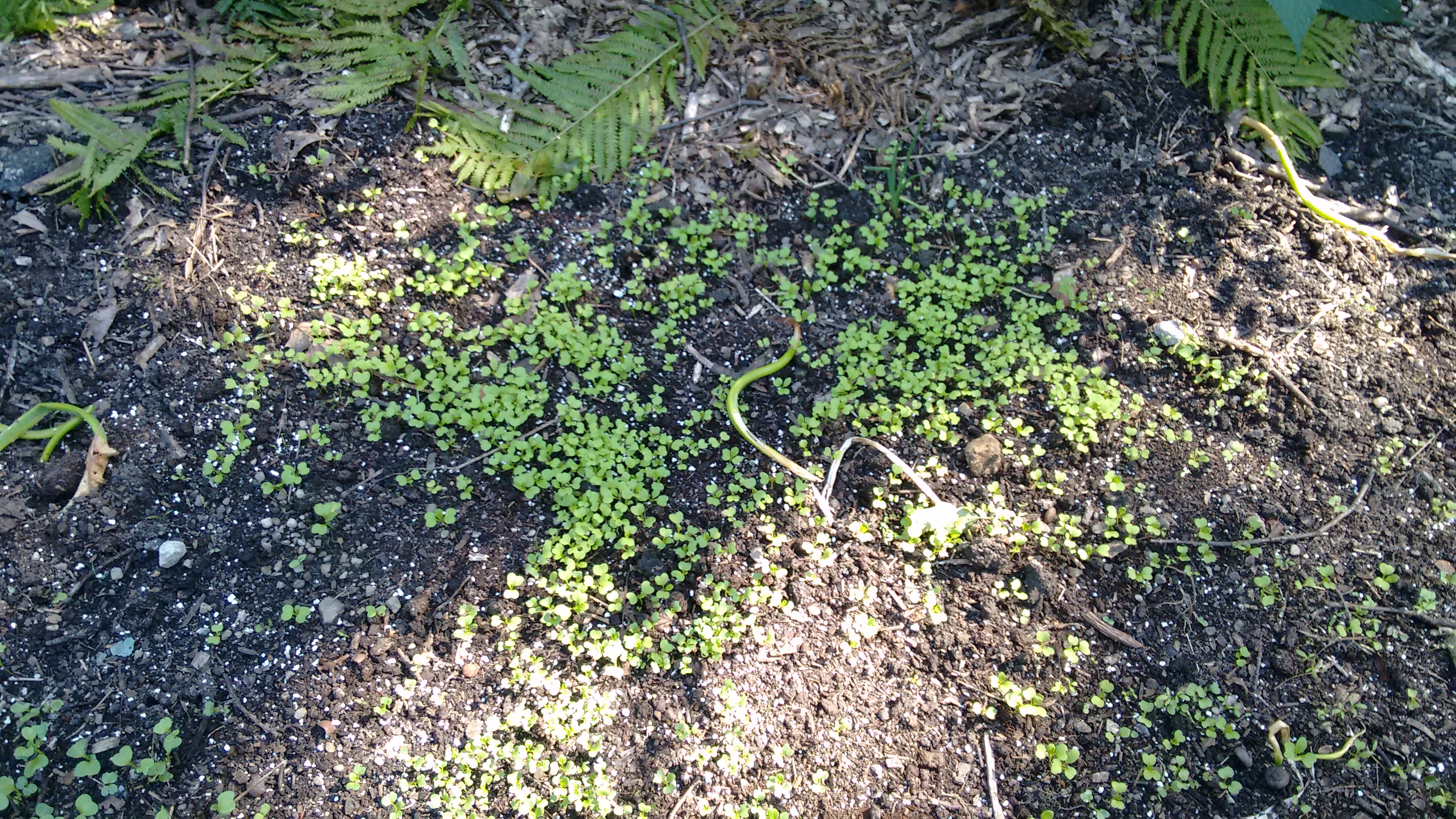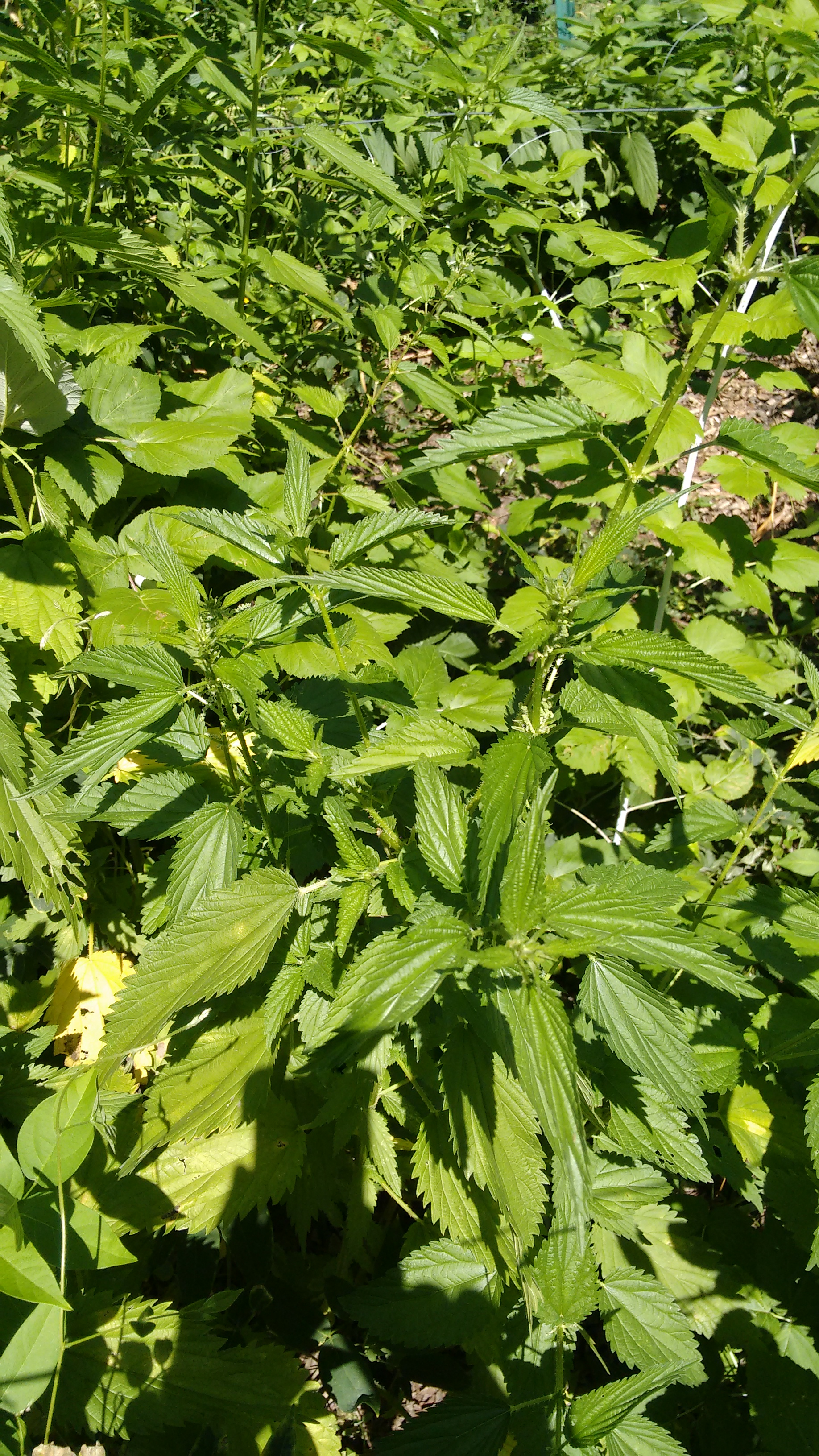by Tom Gibson
The story begins with well-intentioned advice from an expert horticulturist friend who suggested Canadian anemone for my backyard Food Forest. “Yes, it’s a little invasive, but it’s such a great plant for wildlife!” (As I remember her comment.)
And her assessment has proven at least partially true. Not only do the white blossoms attract diverse insect pollinators, but the roots provide an unusually hospitable home to worms, millipedes, and, no doubt, trillions of other creatures (food to the aforementioned invertebrates) visible only via a microscope.
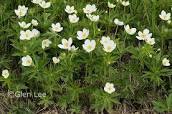 ( Canadian anemone looking innocent)
( Canadian anemone looking innocent)
I observed some of this soil life cornucopia as I tried to pull out proliferating Canadian anemone, which wants to pop up everywhere it’s moist. When it can, it tries to squeeze out any competitors with a thick, fine matt of roots that covers every millimeter of soil surface; with a Cape Cod scraper it comes off like a soil-infused, hairy human scalp. The moist root mass and regular root die-off probably explains the thriving microbe-to-worm food chain. So, while I was aggravated by the plant’s aggressive spread, I was delighted by the rich soil it left behind. Talk about tilth!
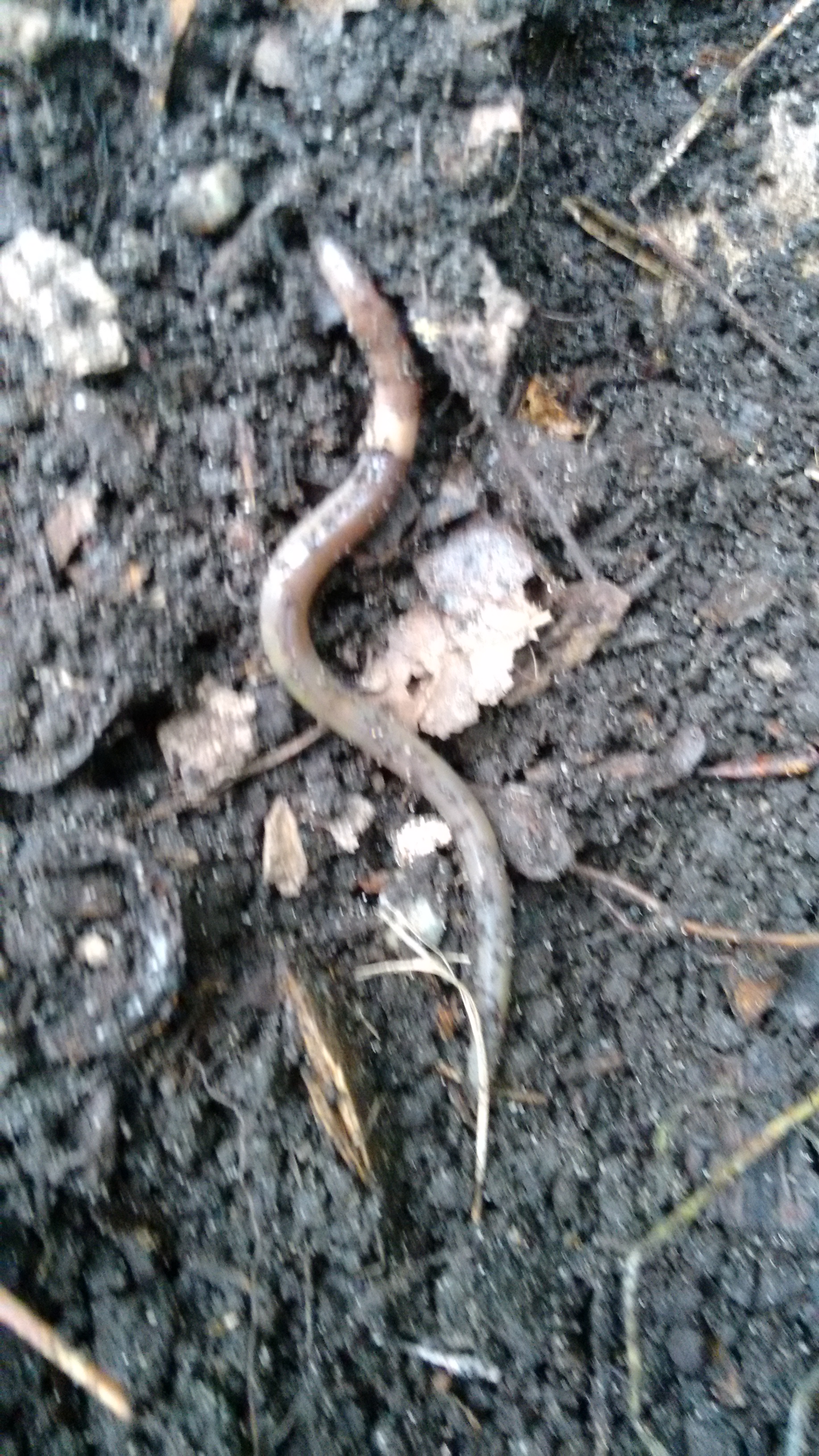 ( What’s left after weeding Canadian anemone: beautiful soil)
( What’s left after weeding Canadian anemone: beautiful soil)
Remembering the permaculture mantra “The Problem is the Solution”, I resolved to keep some Canadian anemone and use it as a nutrient factory for a deeper-rooted plant—the goji berry bush. The roots don’t compete and the anemone root nutrients would trickle down. And, in fact, the combination planting caused an explosion of goji berry production. When lecturing our various permaculture classes, I liked to pull out this home-developed solution to illustrate permaculture principles in action.

Alas, even permaculture principles have their limits. I never found enough time to keep my Canadian anemone under control. My Food Forest floor was overrun. It was either get rid of Canadian anemone once and for all or sacrifice too much space to a non-edible, aggressive invader. (I’ll have to find some other productive ground cover for my goji berries.)
That’s what I’m doing this August. Elimination, of course, requires multiple passes as the Canadian anemone rhizomes refuse to die off. But, by September, I think they’ll be gone or, at most, require occasional plucking.
( Canadian anemone returning for a second try. They’ll be gone soon!)
One silver lining: the beautiful soil they’ve left appears ideal for planting shade-loving salad greens. Witness my happy new komatsuma sprouts.
Stinging Nettle: A Potential Frenemy Becomes a Generous Friend.
I’ve had better luck with stinging nettle. It could have become annoyingly aggressive, but has pretty much stayed along the south edge of my raspberry patch. There it accumulates calcium and magnesium, among other minerals, which become more easily available to other neighboring plants. Thus, its frequent inclusion in lists of superior companion plants.
But stinging nettle is good for us, too. According to Martin Crawford, author of Creating an Edible Forest Garden, stinging nettle contains approximately double the nutrients of even our most nutritious annuals like spinach. It is also tasty when cooked. (That’s when it also, conveniently, loses its chemical sting.)
(Stinging nettle and mushroom omelet)
In growing it, I’ve discovered one other benefit: cutting the fresh young tip—the sweetest and most edible– causes the plant to respond with three more of the same! Production triples and, with further cuttings, sometimes even more.
(a second flush of stinging nettle leaves)
Unlike my Canadian anemone experiment: a clear winner!
